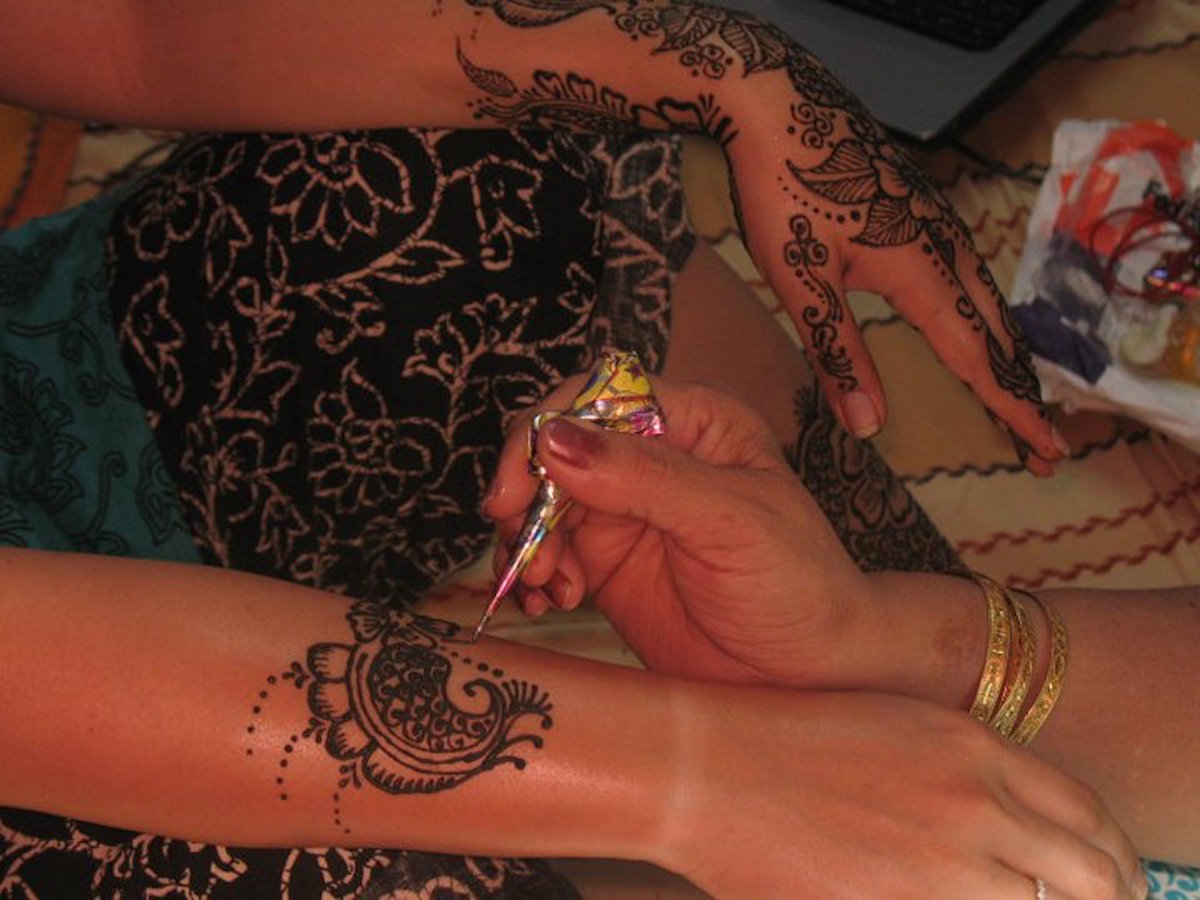The Art of Bridal Henna Tattoos

Courtesy photo
In 1997, when Madonna and Gwen Stefani started sporting henna tattoos, the Western world took notice of these gorgeous and artful techniques. But we were already behind the times.
This traditional adornment has been used for centuries in most cultures of South East Asia, the Middle East, and parts of Africa. It’s done for brides as part of the cosmetic process she goes through in preparation for her big day.
We asked Nimmi Sehgal of Boston Henna, one of the Boston area’s first henna artists, to explain a bit more about henna traditions and how it goes hand-in-hand with weddings.

Courtesy photo
Who typically gets the henna?
Bridal henna is traditionally done on both sides of the hands and feet up to the calves. It’s done for the wedding party and most women attending the wedding, but the most elaborate design is always done for the bride.
What exactly is henna?
Henna is a natural dye made of the dried and powdered leaves of the henna plant. It’s mixed with a strong brew of tea, then blended into a paste. Handmade plastic cones similar to small pastry bags are used as applicators.
Is there a ceremony that accompanies the painting?
The henna party is held the night before the wedding at both the bride’s and groom’s house separately. A large bowl of henna paste is placed next to the bride/groom, and the elders in each respective family dip their fingers in the henna and applies it to the palms of the bride/ groom. This symbolizes a blessing for the new chapter in their life and a wish for a long, happy marriage. The hands are then stamped on the walls of their parents’ home. This symbolizes a mark that the child leaves with his parents before he moves on to start his own family.
What goes into the actual application?
Henna oil is applied to the hands and feet of the bride, and the henna artist draws the design. As the henna dries, a mixture of lime juice and sugar is dabbed onto the design to allow it to adhere to the skin and bring out a darker color of henna. The bride has to leave the henna on for a minimum of four to six hours before scraping of the dried henna. After the superficial layer is removed, the henna has stained the skin with the design. A few drops of henna or olive oil are applied to the hands and feet to allow the henna to set further and last longer.
Are there traditional designs?
There are many types of henna designs. Indian designs tend to be quite floral or with Indian design elements such as paisleys. We also do a lot of Arabic designs, which tend to be bolder and floral with incorporation of geometric designs.
How long does the process itself take?
Bridal henna can take from two to six hours to apply, depending how large and intricate the design, and can last anywhere from two to three weeks. Considering the process of henna is time-consuming and limits the bride from using her hands or walking about, she is often pampered by her family members.
Getting married? Start and end your wedding planning journey with Boston Weddings' guide to the best wedding vendors in the city.


